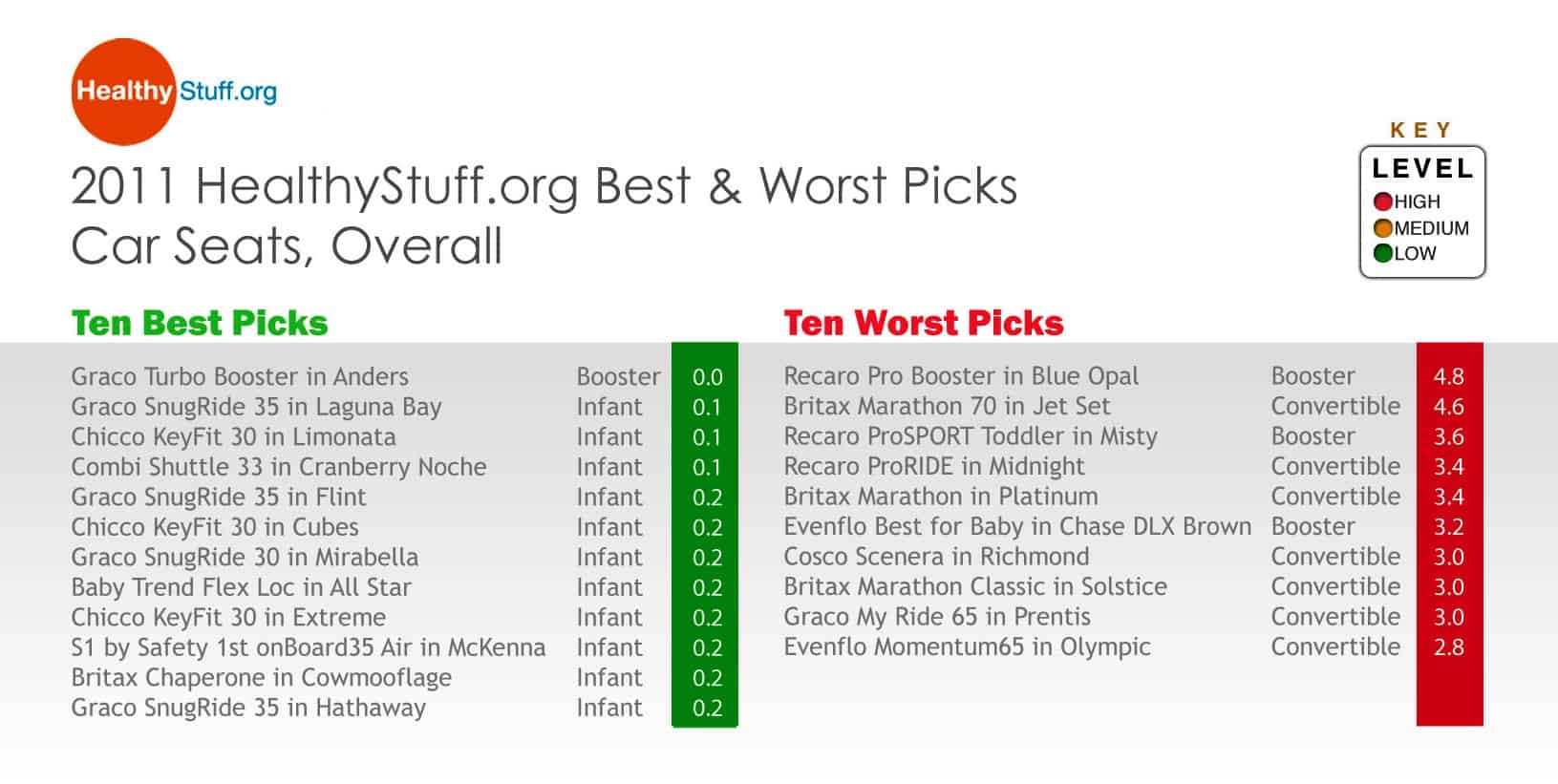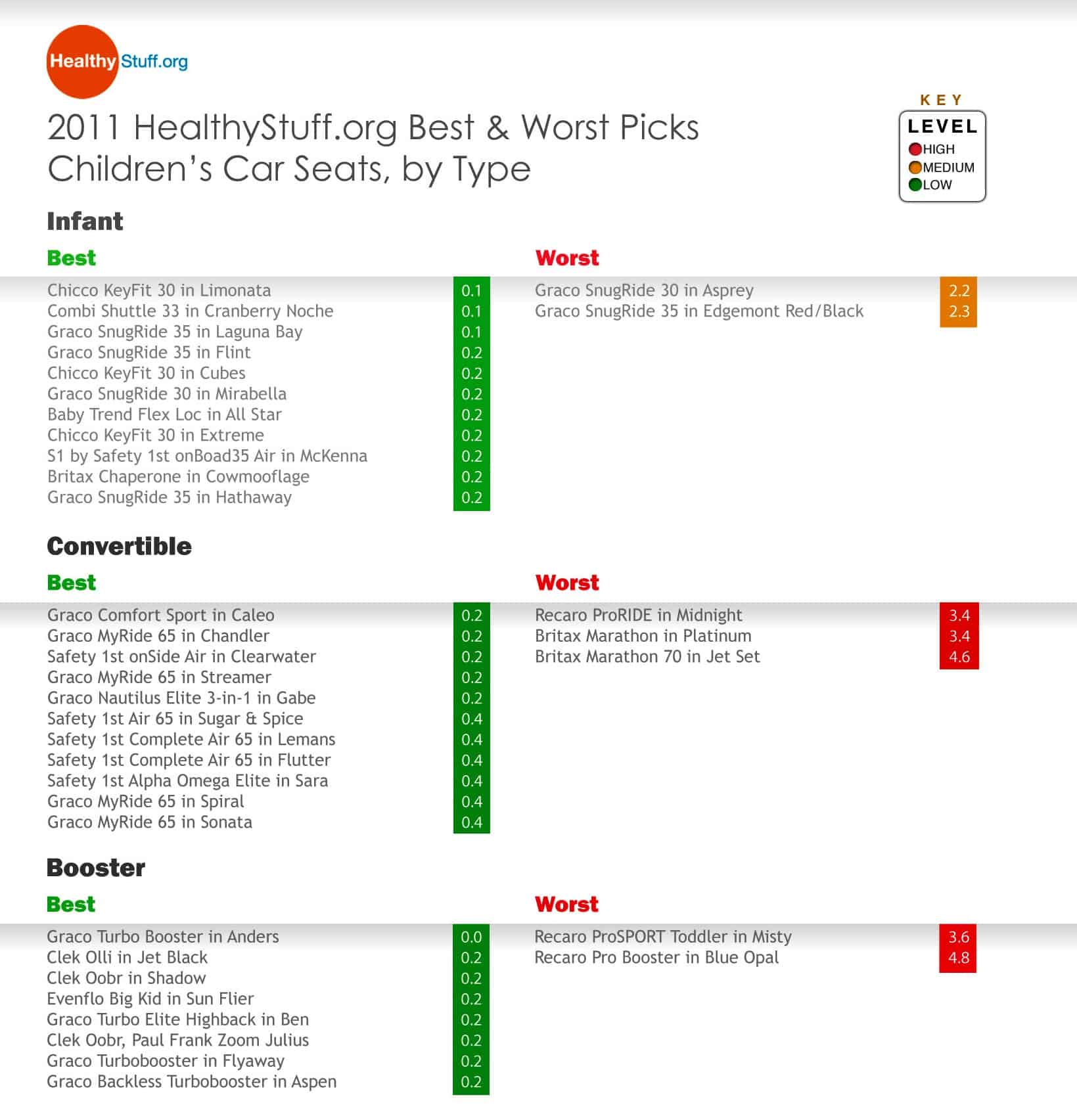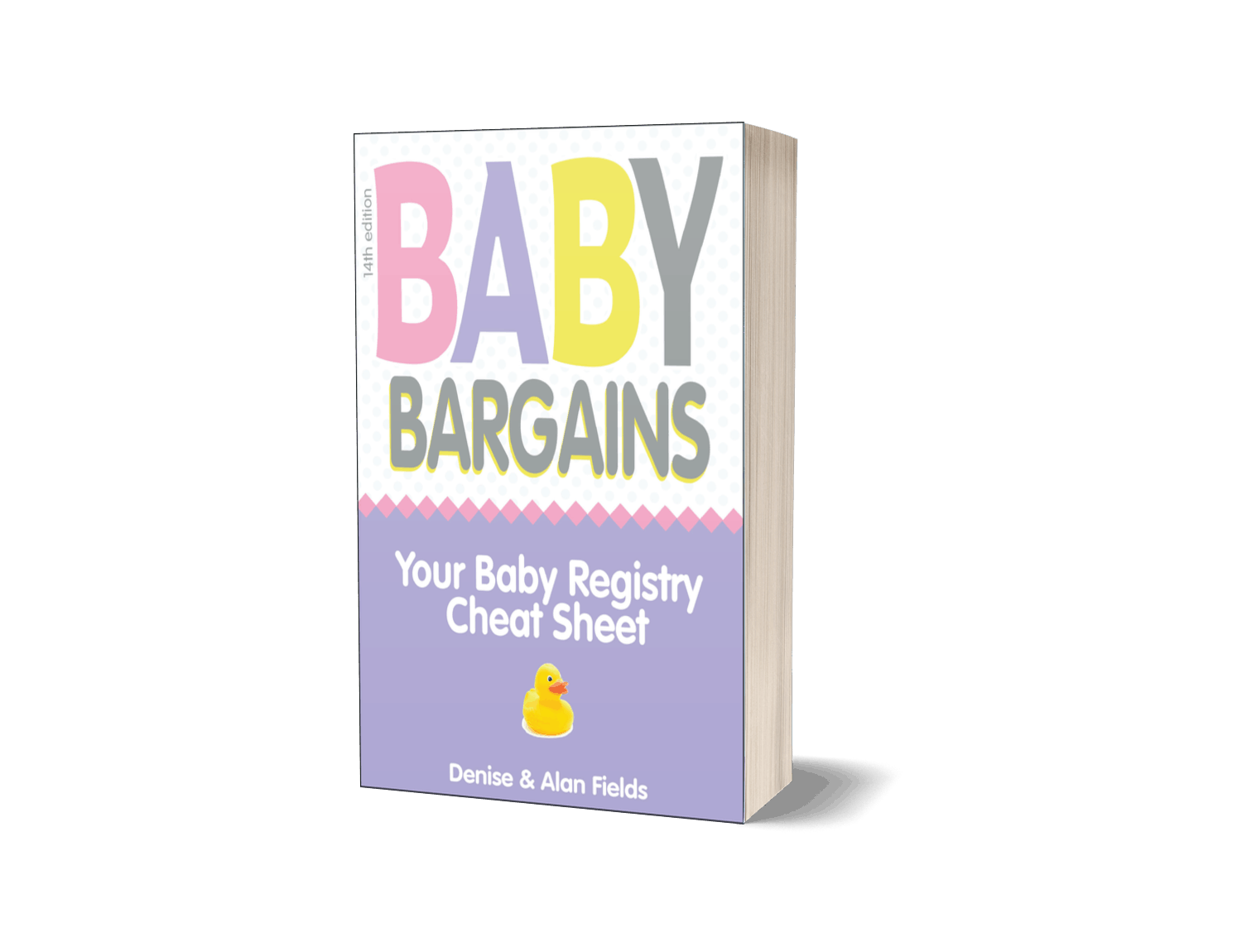
We realize some folks might be freaking out by reading these results. And a big obvious question is: if you own one of these seats, should you panic? And why do the results vary so much, even with the same model car seat?
Here are some thoughts:
1. We applaud the Ecology Center for doing these tests and shining a spotlight on the use of these chemicals in car seats. Parents are rightfully concerned about exposure of babies (who are most vulnerable) to these known carcinogens.
2. There is one big caveat to the this discussion: the chemical levels the Ecology center uses to declare a car seat dangerous are arbitrary. There are no federal safety standards that say car seats can only have, say 1000 parts per million of bromine in their car seat fabric. Yet the Ecology Center declares that any seat with bromine levels over 1000 ppm is “high”—and such seats should be avoided. Bottom line: there are no scientific studies that say a baby who sits in a car seat with a “high” bromine level will have thyroid problems, learning difficulties (or other bromine concerns listed on Healthy Stuff’s web site). Healthy Stuff wants to play this issue both ways—warning parents about chemical concerns, but then providing a disclaimer on its reviews saying the site’s ratings “do not provide a measure of health risk or chemical exposure associated with any individual product.” Huh?
3. One exception to the debate over chemical exposure: lead content. There is clear scientific evidence that exposure to lead causes significant health problems in children. However, most of these studies are focused on the health effects of kids who ingest lead paint (from houses that pre-date 1978, for example). Just because a child sits in a car seat with a buckle that has a high lead content does NOT mean the child has been exposed to a dangerous level of lead. Ditto for a child that sits in a car seat whose base contains a level of lead that Healthy Stuff considers high. Yes, babies put everything in their mouth, but we have yet to see a baby swallow an entire car seat base.
4. One unknown factor: how do these chemicals break down when exposed to the high heat and UV exposure that most car seats are subjected to? A plausible argument could be made that car seats with higher levels of chemicals could be more of a problem when exposed to summer-time heat.
5. We should point out that some of the same car seats scored both “best” and “worst”—such as the Graco SnugRide 35. That seat in “Laguna Bay” got a “best” rating, while the same model in “Asprey” scored “worst.” Why? That’s because manufacturer’s use different types of fabrics for the same model. We assume certain fabrics and colors are processed in different ways when manufactured.
Bottom line: if you are car seat shopping, uses these ratings to consider which fabrics to avoid. If you own a car seat that is on the “worst” list, no need to panic. There is no scientific evidence that you are putting your child in danger by continuing to use the seat. However, if this is keeping you up at night, replace the seat with a model that scored better on the tests—-you can wait until your child outgrows that infant car seat before moving to a convertible, of course.
What do you think about these tests? Read the report and let us know your thoughts.



 We obsess over gear for families . . . so you don't have to. Baby Bargains has one mission: help you find the best gear for your family and home with unbiased reviews by experts with 20 years of experience. At prices that don't break the bank. When you purchase a product from links on this site, we make a small affiliate commission. Learn more
We obsess over gear for families . . . so you don't have to. Baby Bargains has one mission: help you find the best gear for your family and home with unbiased reviews by experts with 20 years of experience. At prices that don't break the bank. When you purchase a product from links on this site, we make a small affiliate commission. Learn more 

I looked at the Chicco Keyfit 30 on the site, and some things don’t make sense. If you look at the different models, you’ll see that they list the base as having different levels of lead and bromine. However, isn’t the base the same on all Chicco Keyfit 30 models?
Good point—we’ll check that out. You are right—the base is the same for the Chicco seat. The fabric can change, but the base is usually the same.
There are flame retardants on the fabrics. These are probably from that.
Their results are labeled by car seats in particular fabrics. Does the reference to “seat” in the results published by HealthyStuff.org refer to the particular type of fabric or the seat itself? (So, if the “seat” was found to have lead, would changing the fabric cover help?) Their website does not make this clear.